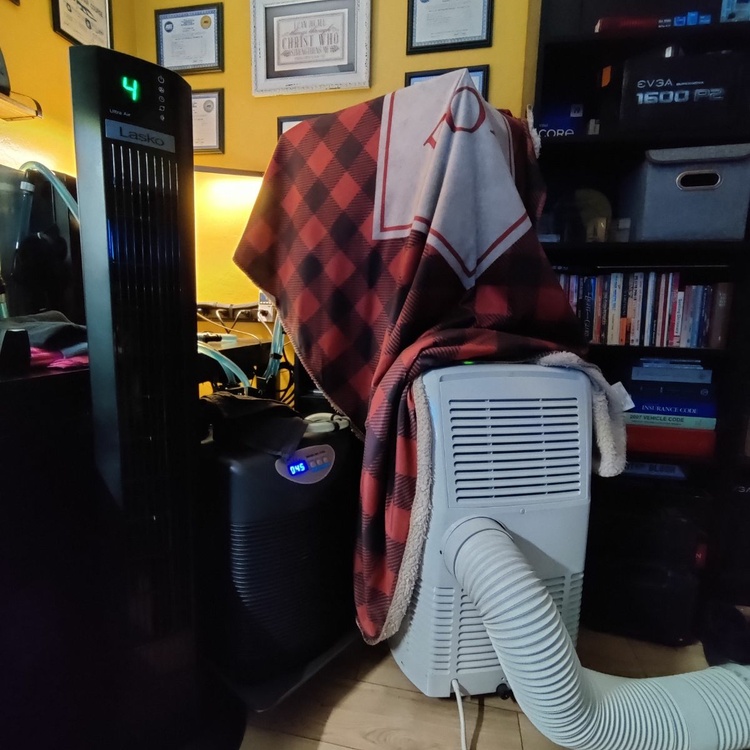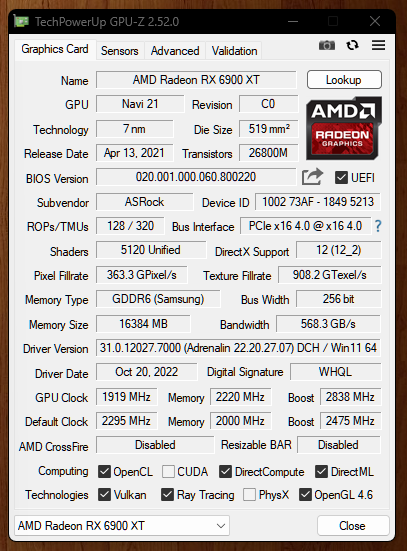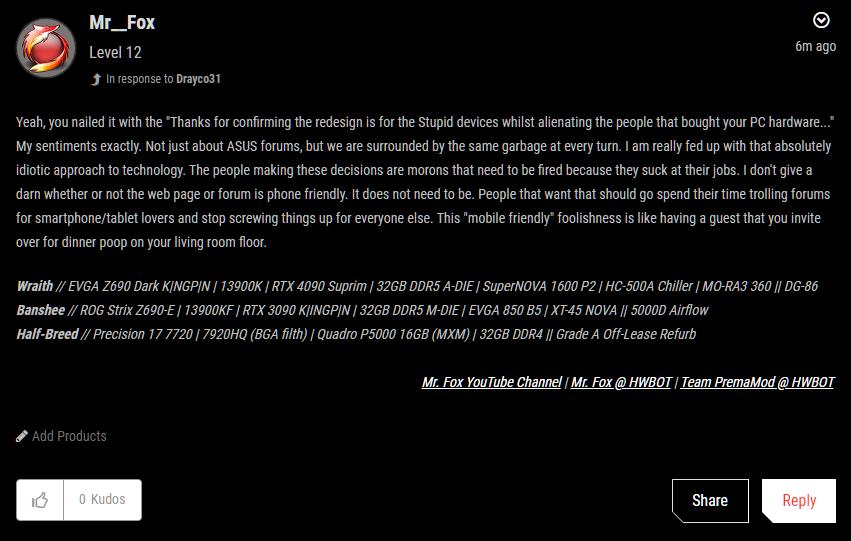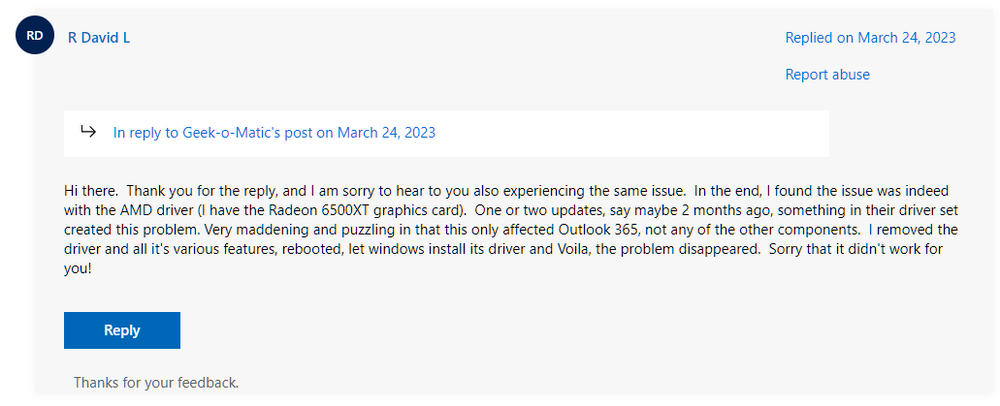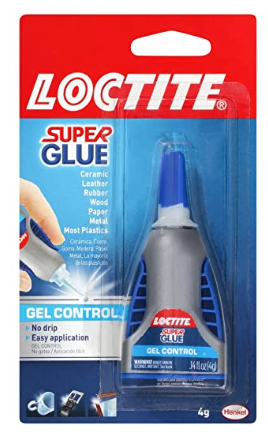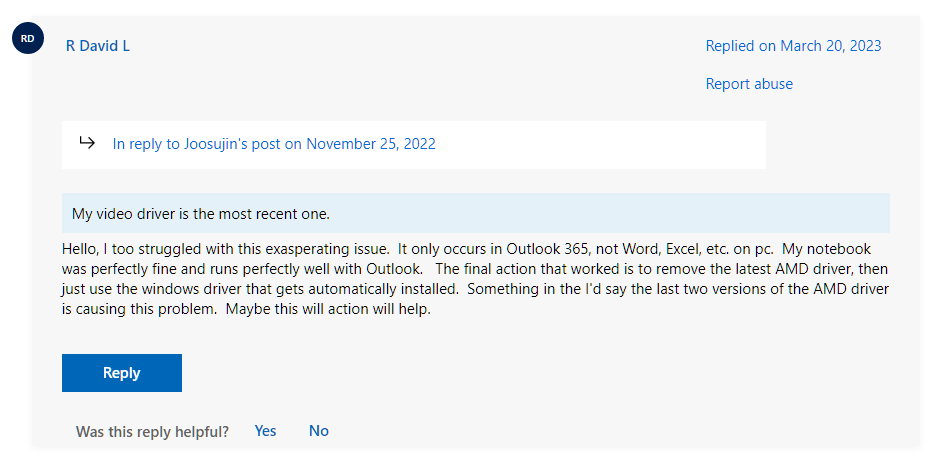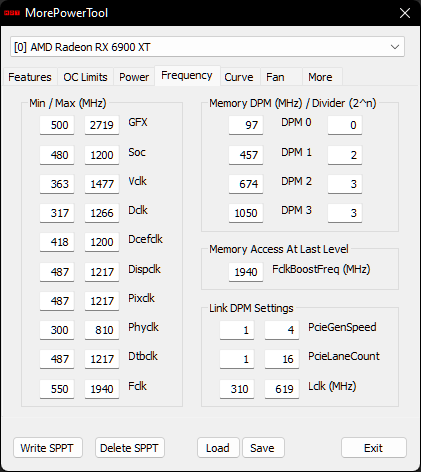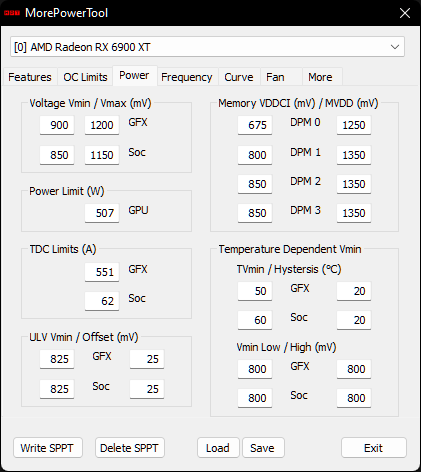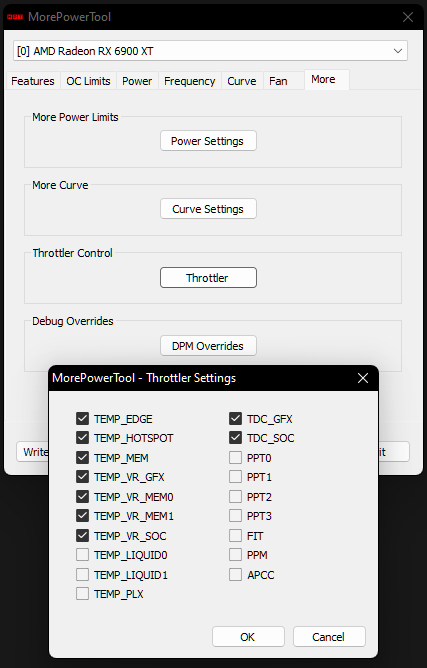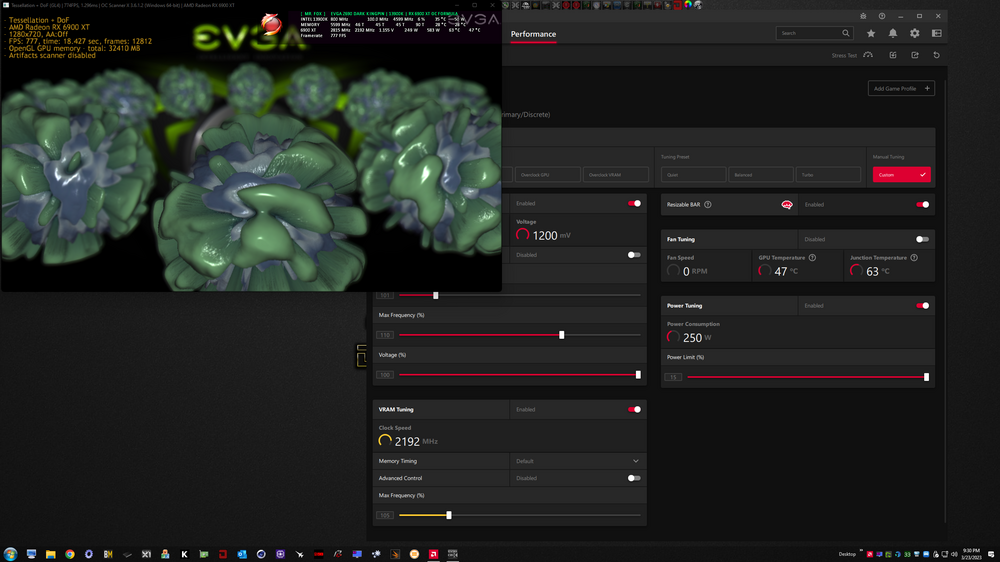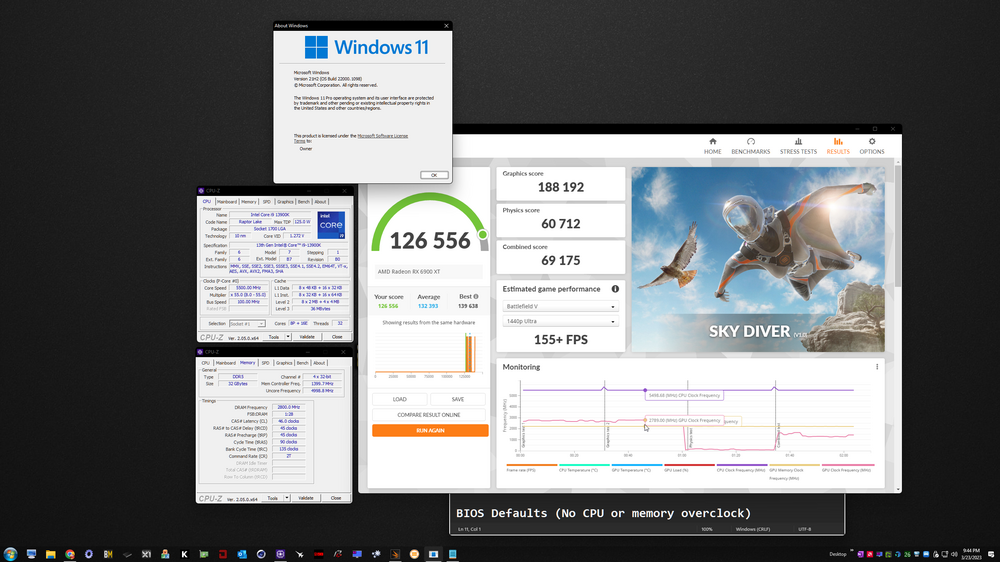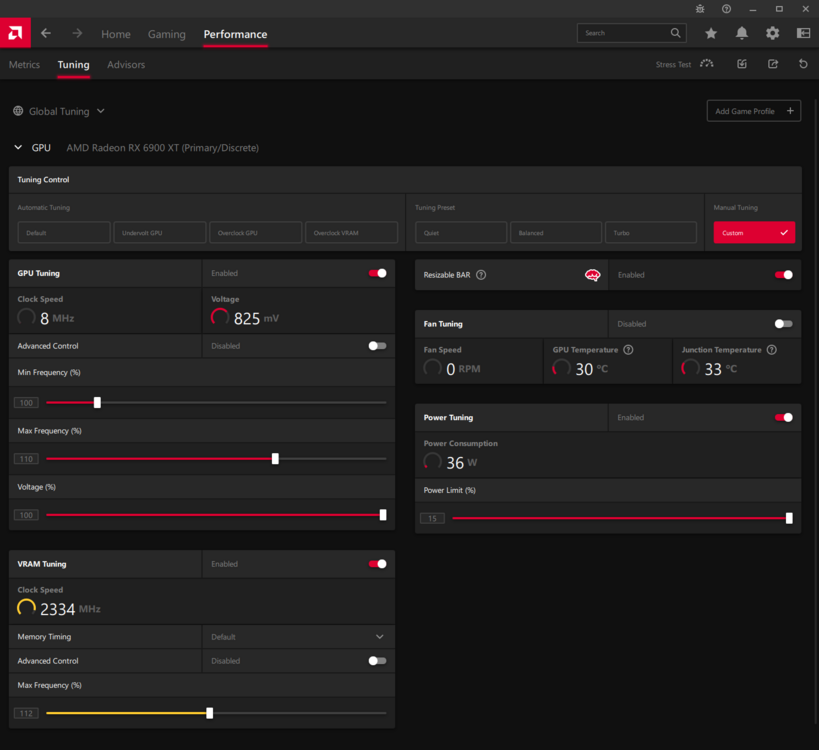-
Posts
6,146 -
Joined
-
Days Won
690
Content Type
Profiles
Forums
Events
Everything posted by Mr. Fox
-
.thumb.png.362386d2804d5f9fbcf2ec7f5aa009c5.png)
*Official Benchmark Thread* - Post it here or it didn't happen :D
Mr. Fox replied to Mr. Fox's topic in Desktop Hardware
It is totally unacceptable. The GPU manufacturers are using whatever parts come to them and letting the people that buy them figure out if they got sold a piece of garbage. If that's how they are going to roll, the price should be half what they currently sell for. Consumer dishonestly has always been a problem. Even during good times without a lot of trash tech floating around. The behavior we see from the hardware OEMs and lack of QC and concern for customer experience fuels dshonesty where it would never otherwise enter a person's mind. The difference now is the OEMs deserve to get screwed back... real hard. Now it is more like consumers returning the favor, tit for tat. I'd almost condone it rather than discourage it at this point, because they're screwing us deliberately. And, you know what they say about payback... bow-wow, doggy-girl. -
.thumb.png.362386d2804d5f9fbcf2ec7f5aa009c5.png)
*Official Benchmark Thread* - Post it here or it didn't happen :D
Mr. Fox replied to Mr. Fox's topic in Desktop Hardware
Stock MSI vBIOS. Will move to the Galax HOF soon. Cold air is keeping core max to 40°C and core max to 48°C with max fans and boosting to 3150 (+225) and +1650 memory offset. https://www.3dmark.com/3dm11/15686404 This excites me almost as much as if it were my own experience. Super happy for you. The delid is long overdue. I anticipate your thermal issues will be largely a thing of the past now. Heating up the IHS is probably what allowed you to push off the IHS without damaging/denting the side of it with the push block of the delid tool. I don't heat the IHS. I will try that the next time. How did you warm it up? I have not delidded the 13900KF in my work computer because I don't ever push the CPU overclock hard enough to thermal throttle on that machine. 5.7GHz on P-cores is as high as I have ever pushed it and that is my daily driver clock on the work machine. Maybe I will try heating it up when I delid that CPU and see if it avoids denting the side of the IHS. -
.thumb.png.362386d2804d5f9fbcf2ec7f5aa009c5.png)
*Official Benchmark Thread* - Post it here or it didn't happen :D
Mr. Fox replied to Mr. Fox's topic in Desktop Hardware
At least you have such a thing during a short window. There is no such thing here. My only option is to resort to this kind of thing. I certainly hope so. It is boosting to 3105 on core with cold air (stock MSI vBIOS) and +1600 memory is passing so far. May go higher (haven't tested). If that is the budget threshold, spending roughly the same on a 3090 or 3090 Ti would be the better option by every measurement. Performancewise RT ON and RT OFF, features and driver stability the 7900 XT/XTX get left in the dust. -
.thumb.png.362386d2804d5f9fbcf2ec7f5aa009c5.png)
*Official Benchmark Thread* - Post it here or it didn't happen :D
Mr. Fox replied to Mr. Fox's topic in Desktop Hardware
Bench-friendly ambient temperatures. Remember, @Papusanis The Snowman. Currently in that part of the world... fresh, moist air -
.thumb.png.362386d2804d5f9fbcf2ec7f5aa009c5.png)
*Official Benchmark Thread* - Post it here or it didn't happen :D
Mr. Fox replied to Mr. Fox's topic in Desktop Hardware
When a reason to go on is hard to identify and the situation seems truly hopeless, sometimes you have to hang onto hope anyway until you can find a new reason or something else that gives you a new reason to carry on. Then you can let go without sinking into a place of darkness and despair. I love this song... it captures that thought nicely. It is also exactly where we find ourselves as a country, planet and technology enthusiasts. Ewww... how 'bout no! Amen to all that. SaaS is the work of the devil. Extortion and racketeering with a candy-coated shell. -
.thumb.png.362386d2804d5f9fbcf2ec7f5aa009c5.png)
*Official Benchmark Thread* - Post it here or it didn't happen :D
Mr. Fox replied to Mr. Fox's topic in Desktop Hardware
I love Evolution on Linux. It is what I use. By far the best Linux alternative IMHO. Last time I checked there was no Windows version of it. Has that changed? It would suit many Windows users very well, for private personal use and basic small business email, task and calendar functionality. Yes, I totally agree. Lots of excellent software is free and fairly often better than the products that are not free. I think the way that sometimes happens is someone that knows how to write software gets tired of using sucky products that are sold at prices that require organ donorship, to they say to heck with that, make their own the way they want it, then share it with everyone that want something that doesn't cost a lot, does not suck, or doesn't cost a lot and suck. If it were not so white monochrome with icky cornflower blue or seaweed green accents I wouldn't hate the light mode. Everything being the same color of white is beyond disgusting to me, and I like white a whole lot. My car is white and I deliberately selected it because it was. They should tone it down with the ludicrous abuse of and make everything light gray by default It would be way better to me. -
.thumb.png.362386d2804d5f9fbcf2ec7f5aa009c5.png)
*Official Benchmark Thread* - Post it here or it didn't happen :D
Mr. Fox replied to Mr. Fox's topic in Desktop Hardware
One word: Outlook - there is no respectable substitute for it anywhere Another word: Excel - if you need more than a moderately complex spreadsheet, nothing else will do The free alternatives are excellent for home users and many business users, but if you are used to Micro$lop Office getting used to the free options is difficult for some people to embrace. They don't like it. It doesn't look as nice and lots of things get moved around and not where you normally find them. For others, being free is all it takes for them to love it to death. -
.thumb.png.362386d2804d5f9fbcf2ec7f5aa009c5.png)
*Official Benchmark Thread* - Post it here or it didn't happen :D
Mr. Fox replied to Mr. Fox's topic in Desktop Hardware
OK, so I went to Micro$lop Catalog and download the October driver. Ran DDU to clean up the leftovers and extracted the cab file. I right-clicked on the INF to install the driver, then opened the subfolder and manually installed CCC. The text rendering problem is about 98% fixed now and very tolerable. Typing in Word or Outlook I have seen about once every 15 seconds of non-stop typing there will be maybe a one second delay in a character that I type appearing on the screen, but I am happy to report that no more artifacts and no disappearing and randomly transposed text, etc. A slow typist would probably not even notice what I see a tiny bit now. If this holds true over the next couple of days, some very fortunate person will have an opportunity to buy a 3090 Kingpin for a very good price. Crossing my fingers because I don't like swappping out parts for benching and would like to avoid that. -
.thumb.png.362386d2804d5f9fbcf2ec7f5aa009c5.png)
*Official Benchmark Thread* - Post it here or it didn't happen :D
Mr. Fox replied to Mr. Fox's topic in Desktop Hardware
Yes, absolutely. I LOATHE the eye-searing white and pastel colored feces that the Redmond Reprobates thinks to be so pretty. Makes me want to puke. Absolutely. That's what friends are for, right? You're going to do great and the results are probably going to be awesome. -
.thumb.png.362386d2804d5f9fbcf2ec7f5aa009c5.png)
*Official Benchmark Thread* - Post it here or it didn't happen :D
Mr. Fox replied to Mr. Fox's topic in Desktop Hardware
Yeah, it's really sad, isn't it? Crazy that they are pushing the trash on us so hard. That alone causes me to have very serious reservations about nefarious intent. Update on the MSO text issue. That Micro$lop thread is getting a lot of attention. This is a known issue that is now popping up frequently on the AMD support forums (a couple examples below). There doesn't seem to be a fix yet, but with AMD catching a lot of crap for it, one will probably be coming soon. Text Issues with the Latest Drivers - AMD Community Outlook365 Problems - AMD Community 7900 XTX is $600-$800 less that a 4090 but you should really consider the massive performance difference and more robust feature set. Not that it is a bad GPU, but everything available now is idiotically overpriced. Nothing is a good or reasonable value. If you're going to spend that much money, might as well add a little more to get a lot more. -
.thumb.png.362386d2804d5f9fbcf2ec7f5aa009c5.png)
*Official Benchmark Thread* - Post it here or it didn't happen :D
Mr. Fox replied to Mr. Fox's topic in Desktop Hardware
@RaidermanI am going to try the Windows Update driver again. I have multiple Windows installations and only need the problem to be fixed with Micro$lop Office on the Winduhz 11 OS I use for work. It is absolutely critical. I can live without M$ Office for personal use 95% of the year. I rarely use Excel or Word outside of work, and Outlook is nice, but not necessary for personal use. The free web version of that is good enough for personal email. If I can get this icky problem stopped, then I will probably use the 6900 XT full time in the work rig and sell the 3090 Kingpin to partially offset the cost of the 4090. If I can't, then I will use the 6900 XT just for benching. I will give this community first crack at the 3090 Kingpin if it goes up for sale. I have quite a few other things I am going to put in the marketplace thread as well. I just need to stop procrastinating and do it. That cool little NUC mini-PC that I never use, a never-used Type-C docking station, two OptimusPC Foundation water blocks that I am not using, and a few other things. I did the review on that NUC, then put it on a shelf. Would be great mounted on the back of a monitor or TV for someone that has no computer. It has seen less than 20 hours use if I had to guess. -
.thumb.png.362386d2804d5f9fbcf2ec7f5aa009c5.png)
*Official Benchmark Thread* - Post it here or it didn't happen :D
Mr. Fox replied to Mr. Fox's topic in Desktop Hardware
That will work. I really hate to see you gluing down the IHS to test the PTM7950 because even if it works well for a bit, it won't work as well as liquid metal and won't likely be as durable. There is really no space to fill between the die and IHS and I think it is not a great idea. But, if you are committed to it, then I am eager to see how it works out in spite of my skepticism. FYI - When the CPU is clamped in place, there is no air gap between the PCB and IHS, so there is no way for a stray droplet of liquid metal to escape or leak out from under the IHS. Liquid metal sticks to itself and tends to bead, which makes the danger even less. It can't really wiggle its way out unless you just go nuts and bathe the CPU with an excessive application. So, no need for fear or excessive caution putting it between the die and IHS. You want to avoid any material that is resistant to compression under the IHS. You want a pure layer of liquid metal with no air space between the die and IHS or it will impair temps. The caution needs to happen on the outside of the IHS. Laying the tower on its back should be fine and totally safe. If you ever removed the CPU with the tower upright, not having the IHS tacked in place could allow it to slip and mess something up. If you always lay it down for working on it, then using the glue is optional. It can't move when the assembly is done. Edit: point of clarity. The reason you want the IHS to spin freely on top of the IHS and no contact or drag against the PCB or remnants of the original rubber sealant is when you clamp it down for gluing, or if no glue is used and you clamp it down into the socket, the PCB is going to flex under pressure and the tiny air gap you started with will be totally gone. (Another reason liquid metal cannot escape.) If you have conact with the PCB before mounting the IHS, the flex in the PCB is going to push the IHS away from the die and contact will be impaired and cooling will be impaired. -
.thumb.png.362386d2804d5f9fbcf2ec7f5aa009c5.png)
*Official Benchmark Thread* - Post it here or it didn't happen :D
Mr. Fox replied to Mr. Fox's topic in Desktop Hardware
1. No. Never had a reason to. It will likely be thicker than liquid metal and more resistant to heat transfer and also physically less thermally conductive as a matter of pure science. The key to it working correctly is getting all of the old rubber off and (if necessary) sanding the underside of the lip to make sure it is not touching the PCB when set on top of the die. It should spin on the die without touching the CPU PCB. Apply liquid metal to both surfaces during assembly or it won't work well. 2. Use liquid metal and bake it in the oven for an hour or so. You could use the Quicksilver as well if you have leftover. Either one will work. Never have seen the IHS get stuck to the die before. Not saying it couldn't happen, only that I am unaware of it based on personal experience. The reason to do it is to stop the copper from absorbing the liquid metal. You let it absorb it in the oven before installing it. Then the liquid metal will last a very long time because it is not being wicked away into the copper. 3. Leaving it loose is best, just be careful if you are using the stock ILM and not let it slide. The ONLY thing to be concerned about with leaving it loose is dislodging the SMDs outside of the IHS. Otherwise, no need for concern. Installing or removing the CPU in a chassis that is vertical makes it more dangerous to be left loose due to human error. On a horizontal installation you just have to pay attention and not allow it to move around until you have it secured. I have used one small dot under each "wing" (one left and one right) of superglue GEL (the gel only, not regular super glue). I have also used one small dot of RTV silicon under each wing. No need for 4 spots to be glued. The only reason to do that is to keep it from moving around when installing or removing the CPU from the socket. Otherwise, reattaching it is a waste of time and just creates inconvenience later. Do not apply it on the outside corners. I have seen Dufus Jufus do that. Silly. Just put some nail polish on the SMDs outside of the IHS and you're good to go. If you use super glue GEL, it takes very little. Let it dry for 20-30 minutes under compression with the relid tool. You can release it later by soaking the CPU in acetone for 15-20 minutes. It will disolve the super glue and not harm the CPU. Not the "ultra" just the regular control gel. It does not run and it is easy to control the amount applied. And, it is not as strong. https://www.amazon.com/Loctite-234790-6-Control-4-Gram-Bottle/dp/B0006HUJCQ/ref=sr_1_1_sspa?crid=R0WPWSAHAWK0&th=1 Apply one tiny drop under each IHS wing. Smaller than the head of a stick pin. Like 0.5-1.0mm diameter droplet. Really tiny so it does not squish out from under the wings on the sides. It only needs to be large enough to tack it in place and you want the bond to be weak/fragile. Edit: @Etern4l- bake the liquid metal on BOTH SIDES of the IHS - forgot to clarify that. Same reason, as given, but don't do only the underside. After baking, use the scuff pad that normally comes with liquid metal and polish it with Flitz and it will look like chrome/nickel. -
.thumb.png.362386d2804d5f9fbcf2ec7f5aa009c5.png)
*Official Benchmark Thread* - Post it here or it didn't happen :D
Mr. Fox replied to Mr. Fox's topic in Desktop Hardware
I use a script to totally remove Defender. Doing that provides a secondary benefit of making most Windows Updates fail, so it ticks both boxes for me. I don't want or care about Micro$lop updates. The .NET stuff will update, but the service stacks and feature updates are generally incapable of installing even manually, so I really love that. I use ESO to kill and disable all worthless Services. Remove Defender.zip -
.thumb.png.362386d2804d5f9fbcf2ec7f5aa009c5.png)
*Official Benchmark Thread* - Post it here or it didn't happen :D
Mr. Fox replied to Mr. Fox's topic in Desktop Hardware
Nice to see good stock at the recommended level of excessive (non-scalper) overpricing. I just snagged another Suprim (non-Liquid) and it seems like it might be a great silicon sample. Same price as Microcenter, too. Maybe I will break out the portable AC unit this weekend and force feed it some frosty air. It will be easy with this case. I can just drape a blanket over it and the AC unit so the cold air has no other place to go. Between the 6900 XT and the 4090 I should have enough to keep me busy with benching for a long time now. -
.thumb.png.362386d2804d5f9fbcf2ec7f5aa009c5.png)
*Official Benchmark Thread* - Post it here or it didn't happen :D
Mr. Fox replied to Mr. Fox's topic in Desktop Hardware
This is only an assumption. It could be accurate, but we have no way of knowing. And, they may not even have the ability to fix it, especially if it involves solving someone else's screw up. If they agreed to try to fix it, then I would probably have to send them the GPU to use for solving the problem because fixing something that is broken that they cannot see or touch would be hit or miss. ASROCK says it is not compatible, so that tells me it was something deliberate. Just because it works on the Strix Z690-E does not mean it would work on a different model of ASUS mobo. It is probably an ACPI implementation thing, but it could be something that is not obvious. And, as sad as it is to think this way, there is no legitimate business case for them to make Windows 7 work if only 1 out of 1,000 people that buy their products are trying to use Windows 7. If there were lots of people that cared, they would be blowing up EVGA forum and EVGA would be reaching out to other OEMs to find out what they did so they can fix their mistakes, or work with them to correct the problems. -
.thumb.png.362386d2804d5f9fbcf2ec7f5aa009c5.png)
*Official Benchmark Thread* - Post it here or it didn't happen :D
Mr. Fox replied to Mr. Fox's topic in Desktop Hardware
No, I knew this 100% going into our deal. Not an issue, or I would not have gone through with it. But, thank you for offering. Same problem with 4090. The demon-possessed TechNazis are on a seek and destroy mission with orders to do whatever it takes to ruin any possibility of using Windows 7. It is only a matter of time until continuing to use it is made impossible by the self-anointed technology SS. I am going to have to move on and forget about Windows 7 very soon because I won't have another option available to me. I know that I am not alone in this disappointment. This is why I am spending more time with Linux than ever before. It's not because I want to... the writing in on the wall. They might win this battle, but I want to win the war. Winduhz 10+ is for losers and sheeple, not for winners and masters of their own destiny. I have thought about reaching out to EVGA. I went back to the oldest BIOS for 13th Gen and the problem is the same. Apparently, here are no other Z690 or Z790 Dark owners that have attempted to run Windows 7 with this OC Formula GPU because there is not a word of it anywhere in EVGA forum. I may still reach out to them and see what they can tell me. I found the info on the ASROCK web page in your link as soon as I discovered it would not work. I started looking for answers and came across that within the first few minutes of searching. -
.thumb.png.362386d2804d5f9fbcf2ec7f5aa009c5.png)
*Official Benchmark Thread* - Post it here or it didn't happen :D
Mr. Fox replied to Mr. Fox's topic in Desktop Hardware
This is a no-go. Maybe it used to be true with a Dark mobo, but not any more. Probably was with X299 since it had such a crazy count of available PCIe lanes. Last night I moved the GPU from the top to the bottom x16 slot and it only runs at x8 speed. I tried disabling the M.2 NVMe slots tied to the CPU lanes and physically turning off PCIe slot #1 using the DIP switch and it still only runs at x8, so experiment cancelled. This guy absolutely nailed it with the "Thanks for confirming the redesign is for the Stupid devices whilst alienating the people that bought your PC hardware..." My sentiments exactly. Not just about ASUS forums, but we are surrounded by the same crap at every turn. I am really fed up with that absolutely idiotic approach to technology. The people making these decisions are morons that need to be fired because they suck at their jobs. I don't give a crap whether or not the web page or forum is phone friendly. It does not need to be. People that want that should spend their time trolling forums for smartphone/tablet lovers and stop screwing things up for everyone else. This is like having a guest that you invite over for dinner pooping on your living room floor. -
.thumb.png.362386d2804d5f9fbcf2ec7f5aa009c5.png)
*Official Benchmark Thread* - Post it here or it didn't happen :D
Mr. Fox replied to Mr. Fox's topic in Desktop Hardware
It is described fairly well in these posts. https://answers.microsoft.com/en-us/msoffice/forum/all/word-2019-not-rendering-text-properly-as-you-type/fb665d6d-70a2-463b-943d-427b83239fbe https://answers.microsoft.com/en-us/outlook_com/forum/all/text-disappears-or-distorted-while-typing-on/91543518-9384-4a50-bc88-889772c33938 Office 365 and Office 2021 Pro Plus, under both Windows 10 and 11. As you are typing some of the characters you have just added (3 to 5 characters generally) will randomly vanish and reappear, and intermittently there will be artifacting and strange looking glitches that are like a tiny image thumbnail of text near the area of editing. It does not affect the entire page of text, only in the area where you are editing/adding text. If you stop typing the chunks of missing text will stay hidden or missing, and text already present will sometimes shift left or right and overlay the area where you are typing, but adding a keystroke or two the text will become visible again. It is not gone, but the rendering of what is there is goofed up. When you are a fast typist like me, this is happening very rapidly, so it is unsettling and distracting. It only happens on my work computer with the 6900 XT installed. I have never experienced it ever before. It does not happen with the 6900 XT installed on the other system. My work computer has three 144 Hz 1080p displays. My other system has a 165Hz 1440p display. I have tried all of the suggestions like disabling Office graphics acceleration and enabling Clear Type (both of which I always do anyway). It is definitely caused by the 6900 XT or AMD drivers. It does not happen intermittently. It always occurs, at all times. Enabling Eyefinity did not make it better or worse. If I am sharing my desktop in a video chat/meeting, those viewing my screen do not see it happening, so it is obviously an issue with rendering on the local machine, and it was not noticed using any other software applications other than Word, Excel and Outlook. It does not occur except while editing content. Opening a document in Word or viewing an email in Outlook and scrolling through pages everything is fine until you begin editing or adding new content. It is not related to overtyping or toggling insert, as it only affects or corrupts the view of existing text already entered and present to the left of where new content is being added. It is very weird and frustrating, and it severely interferes with getting work done. Kind of a bummer, since it is the system that allowed me to use Windows 7 with the 6900 XT. But, that makes me wonder if maybe the same underlying issue is what prevents my Windows 7 desktop from loading correctly on the other system., but manifests itself in a different way. If I install the 6900 XT in the other system and boot into Windows 7 I can hear the Windows login sound, and System notification sounds like the USB devices loading, and I can log out or choose to restart blindly by hitting the Windows key, right arrow twice and hit enter, but only the Windows 7 Welcome screen with the black background and colored logo appears on my screen. It is like the Welcome screen never leaves and it is covering up the desktop GUI. I tried this and it did not resolve it. But, I do think it is a driver or vBIOS issue. -
.thumb.png.362386d2804d5f9fbcf2ec7f5aa009c5.png)
*Official Benchmark Thread* - Post it here or it didn't happen :D
Mr. Fox replied to Mr. Fox's topic in Desktop Hardware
I guess they had to make their forum match their warranty support and QC. And, it will only cost a half a bazillion USD. Maybe it will have RTX 4090 for integrated graphics. -
.thumb.png.362386d2804d5f9fbcf2ec7f5aa009c5.png)
*Official Benchmark Thread* - Post it here or it didn't happen :D
Mr. Fox replied to Mr. Fox's topic in Desktop Hardware
Brother@PapusanI found the fix for the Micro$lop Office text rendering corruption and artifacts. The new driver did nothing. The fix is called NVIDIA, LOL. Put the 3090 K|INGP|N back into my work computer and everything works correctly now. -
.thumb.png.362386d2804d5f9fbcf2ec7f5aa009c5.png)
*Official Benchmark Thread* - Post it here or it didn't happen :D
Mr. Fox replied to Mr. Fox's topic in Desktop Hardware
You can change the memory clock using MPT. I bumped my default from 2000 to 2100 by changing the value for DPM3 from 1000 to 1050. I also boosted the 100% TGP limit so over 500W (583W with +15% on the slider) TDP for GFX and an equal bump for TDC and SoC. I also disabled the throttling mechanisc for PPT0. I don't even like that new kind that much. I mean, they're OK, but nothing special. I have a couple hundred of them like that without EVGA branding. (Literally bought a pack of like 200 on Amazon, LOL.) This type is not nearly as good as the kind we like that come with an EVGA graphics card. -
.thumb.png.362386d2804d5f9fbcf2ec7f5aa009c5.png)
*Official Benchmark Thread* - Post it here or it didn't happen :D
Mr. Fox replied to Mr. Fox's topic in Desktop Hardware
Yeah, that definitely wouldn't be good. I use the Asian blue 50/50 premix and it is pale enough it looks clear except for what is in the reservoirs. I don't want the green or red coolant. The Asian car blue stuff doesn't look blue running through the tubing, but the red and green stuff show their colors more running through the loop. The coolant lubricates the pumps and QDC fittings, keeps the o-rings from drying out and cracking, kills all living organisms and prevents corrosion. All of the same things it does in your car. It also plays nicer with dissimilar metals, just as it does with the hodge-podge of random metals found in your car's engine/cooling system. Temps seem the same to me as running pure distilled water, so it is kind of a no-brainer. I think I am going to try an experiment with the 6900 XT Brother @Rage Set. One of the nice things about the Dark motherboard is it has DIP switches to disable PCIe ports. And, the PCIe x16 slots are both capable of running full x16 speeds as long as both are not in use. Most mobos can only run the second slot at x8 even when the first one is vacant. You can install your GPU in the bottom slot and leave the top one empty and it still runs at x16. You can also disable them in the BIOS, but that won't let me do the experiment. I think that I am going to try running an NVIDIA GPU in the top slot and the 6900 XT in the bottom slot. Boot into Windows 7 using the NVIDIA GPU, then turn on the AMD card, install the drivers and then use the DIP switch to disable the NVIDIA card while in Windows and see how the 6900 XT behaves when it doesn't have to go through the booting phase where it stops working. I might also try running both at x8 simultaneously to see what kind of nonsense surfaces. Might try that this weekend and see what happens. -
.thumb.png.362386d2804d5f9fbcf2ec7f5aa009c5.png)
*Official Benchmark Thread* - Post it here or it didn't happen :D
Mr. Fox replied to Mr. Fox's topic in Desktop Hardware
X570 and 5950X had poor core overclocking, absolutely repulsive memory overclocking, ludicrous latency issues, WHEA errors up the kazoo and extremely frustrating issues with USB dropouts even when using the Agesa cancer that they said "fixed it" made zero improvement for me. Ran MUCH hotter than my 12900K/KS or 13900K at lower clocks and lower voltage. The pairing of one good CCX with a second horrible CCX was also more idiotic than Intel putting Atom cores on 12th/13th Gen. The USB drop-out problems made it unreliable even running BIOS defaults. I literally had to disconnect and reconnect my mouse and keyboard at every cold boot or they were not detected, and they would randomly stop working during normal use. The only thing I liked about it was fluffy Cinebench scores. Otherwise, I would not have wished it on an enemy. It was the most regrettable "upgrade" I can remember in my lifetime. Very expensive garbage. Sweet! What did you have to do to make W7 work right? Or, is it only Sky Diver and 3DMark 11 still not cooperating with you? If you haven't already done so, try setting the minimum core clock 50-100 MHz less than max. And, also try diabling "Advianced" core and memory overclocking. Set core minimum at 100% and core maximum at 110% and memory at 110%. Doing either of those things dramatically improved my 3DMark 11 scores and destroyed W10/11. 3DMark 11 is extremely demands and Windows 7 makes it more so, and left to its own devices I think the GPU downclocks to try to avoid using as much power as Windows 7 wants it to use. I found that setting the max core clock only allows the GPU fall to stock clocks under severe load. EVGA will probably sell you some of those Velcro straps if you email them. I love them... best ones I have found anywhere. No, but it hasn't seen enough use yet for me to comment. It has been in use only a couple of weeks. It was brand new before I installed it. Seems like a very high quality GPU block to me. I really like it. I agree with that. Probably is a one-off. I have found everything stays looks extra nice using automotive coolant in the loop. I never plan to use anything else. Learned that from Brother @johnksssand when you stop and think about it, kind of like common sense. We don't have issues with our automotive cooling systems when we use it. -
.thumb.png.362386d2804d5f9fbcf2ec7f5aa009c5.png)
*Official Benchmark Thread* - Post it here or it didn't happen :D
Mr. Fox replied to Mr. Fox's topic in Desktop Hardware
There is only one way to deal with hackers... snuff 'em out. They're not as bad as rapists, murderers and armed robbers, but they aren't far behind them on the scale of human feces. Their lives are worthless. Burn the witches! Seek and destroy.




